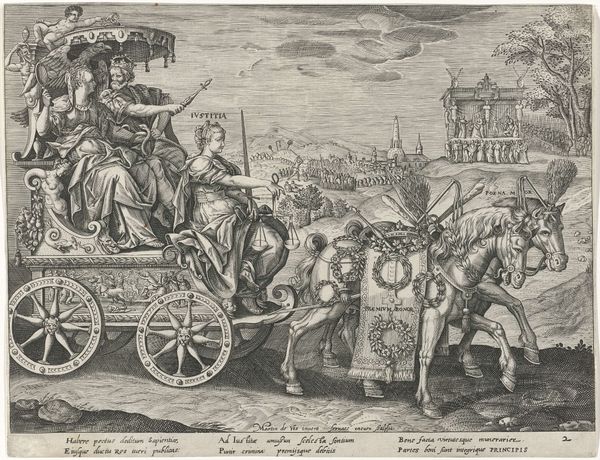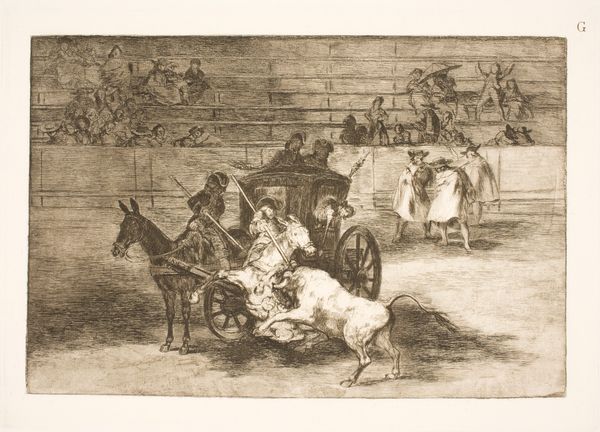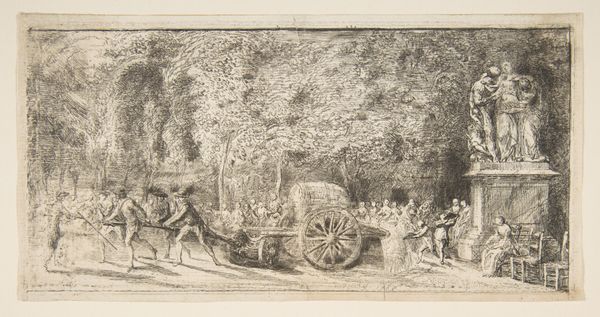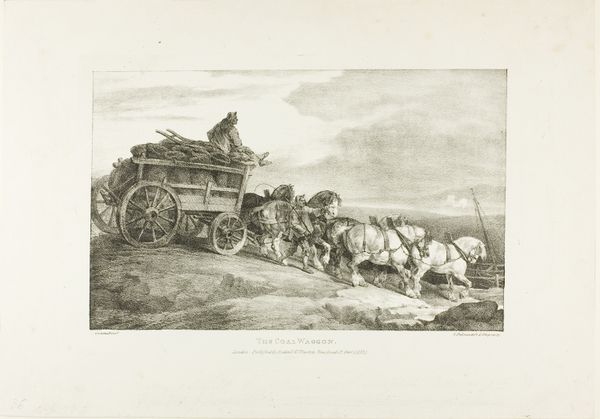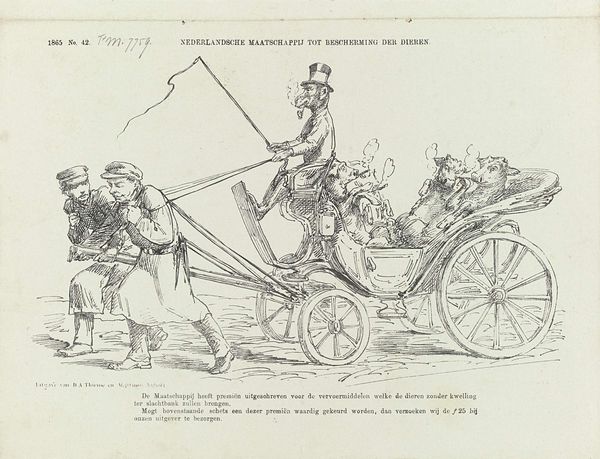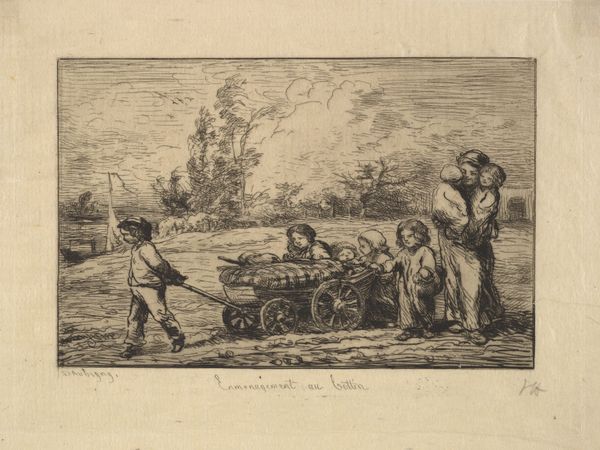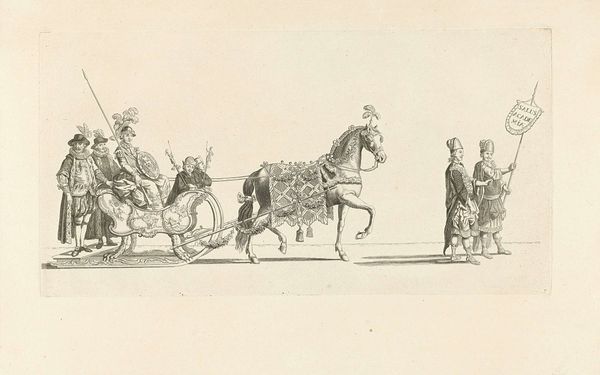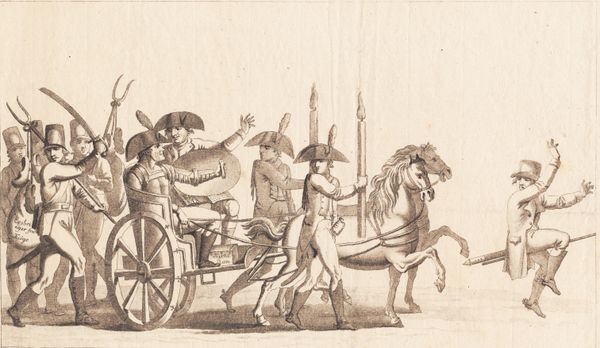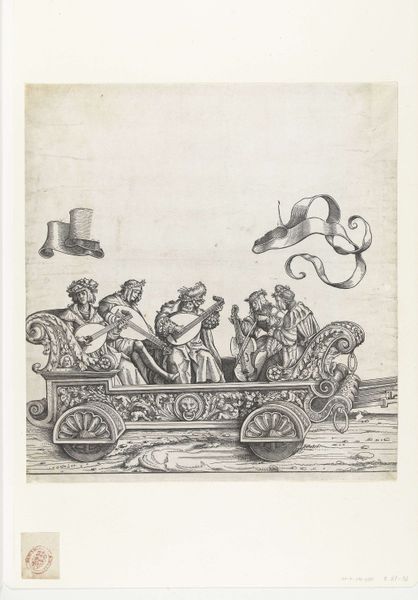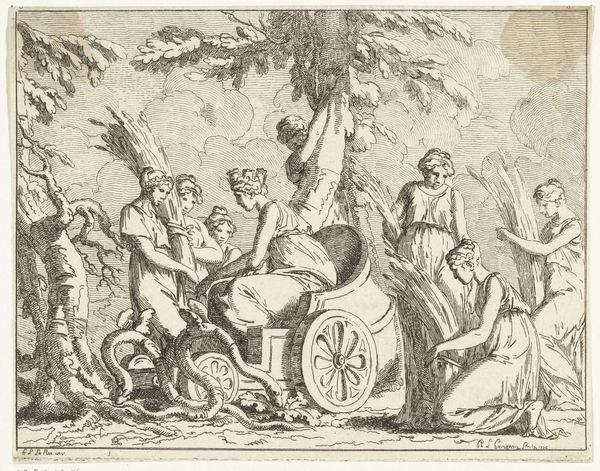
print, engraving
#
narrative-art
#
baroque
# print
#
pen sketch
#
figuration
#
line
#
genre-painting
#
engraving
Dimensions: height 128 mm, width 175 mm
Copyright: Rijks Museum: Open Domain
Crispijn van de Passe II created this engraving, "Overspelende echtelieden op een wagen," which translates to "Adulterous couples on a wagon," during the Dutch Golden Age, a period marked by significant social and cultural shifts. The print offers a glimpse into the era’s attitudes toward morality and gender roles. Adultery, particularly by women, was not just a personal failing but a public matter with legal and social repercussions. The shaming wagon, driven by a Pan-like figure, underscores the public humiliation inflicted on those deemed to have transgressed marital vows. The varied reactions of the figures on the wagon—from shame to defiance—suggest complex emotions tied to the lived experience of gender and societal expectations. The imagery challenges us to consider how early modern European society negotiated issues of morality, public shame, and the precarious position of women within marriage. It reminds us of the emotional and social lives intertwined with historical norms.
Comments
No comments
Be the first to comment and join the conversation on the ultimate creative platform.
